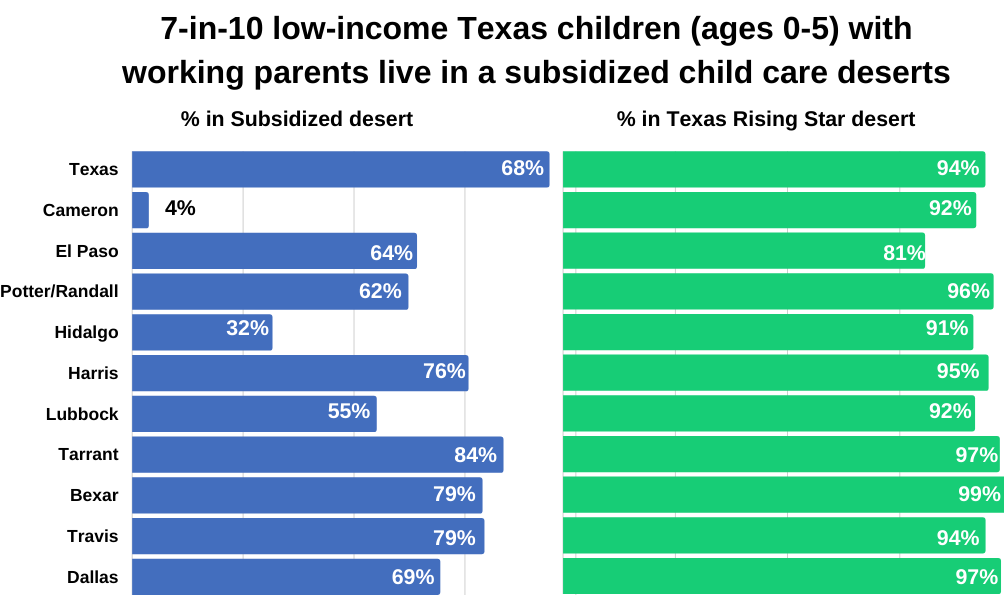By Kaeleigh Hernandez, Early Childhood Education and Sara Moran, Center for Social Measurement and Evaluation
(Note: The analyses in this post uses data on child care centers from September 2019)
Across Texas, nearly half of all child care providers accept subsidies – around 8,000 licensed child care centers and homes. However, many parents that qualify for subsidy care, have limited options of affordable high quality child care providers (those rated by the state’s Quality Rating and Improvement System, known as the Texas Rising Star). In many places across Texas there simply are too few child care providers – and child care seats – in the subsidy system to meet the demand.
According to CHILDREN AT RISK’s analysis of child care provider data and census data, there are an estimated 123,000 more low-income children (ages 0-5) with working parents than available subsidized child care seats in child care centers and registered homes. That amounts to just 242 subsidized seats per thousand children.

This estimate excludes the more than 305,000 children from low-income families already served by public Pre-Kindergarten and Head Start programs.
Moreover, when it comes to quality child care seats certified in Texas Rising Star – the state’s only Quality Rating and Improvement System – there are only 84 seats for every thousand low-income children. Fewer than 4-in-10 subsidized seats are certified in TRS.
Child Care Deserts in Texas
Building on work by national experts at Child Care Aware and Center for American Progress, CHILDREN AT RISK analyzed data on the supply and demand for child care from every zip code across the state to identify two kinds of child care deserts: subsidized child care deserts and quality child care deserts.
You can explore our Texas child care desert map here.
A zip code is a “child care desert” if the number of children under age 6 with working parents is three times greater than the licensed capacity of child care providers in the area.
Roughly 1-in-10 Texas children (0-5) with working parents live in a child care desert. Around 90,000 low-income children under age 6 with working parents live in zip codes where the supply of subsidized child care meets less than a third of the demand.

However, this number is far higher for children from low-income families living in a child care desert: 7-in-10 low-income children with working parents live in zip codes where the supply of subsidized child care meets less than a third of demand.
The data demonstrates that the lack of access to Texas Rising Star is nearly universal throughout the state among low-income families. More than 9-in-10 children from low-income families in Texas live in a Texas Rising Star desert.
Call to Action
In order to increase access to affordable high quality child care, one policy recommendation is to mandate the enrollment of subsidy providers in the Texas Rising Star. Participating in the Texas Rising Star, will help monitor the quality of care children receive and provide quality improvement resources to providers serving our most vulnerable populations.